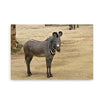The Democratization of Photography: From the Daguerreotype to the Smartphone
Photography, once reserved for a privileged elite, is now ubiquitous in our daily lives, thanks to the technological revolution and the democratization of shooting tools. But how did photography go from a complex and expensive process to a common practice accessible to all? This is what we will explore in this article.
The beginnings of photography
Photography was born in the 19th century with processes such as the daguerreotype, invented by Louis Daguerre in 1839. These early photographic techniques were expensive, time-consuming and delicate, requiring great expertise. Thus, photography was mainly the prerogative of professionals or wealthy amateurs.
The advent of Film and the Camera
The democratization of photography really started with the introduction of photographic film and portable cameras. In 1888, George Eastman introduced the Kodak No. 1, an easy-to-use camera that made photography accessible to the general public. With its slogan "You press the button, we do the rest", Kodak revolutionized the industry and popularized photography.
The Digital Revolution
The advent of digital technology marked another major step in the democratization of photography. Digital cameras, introduced in the 90s, eliminated the need for film and allowed users to view and edit their photos instantly.
The Role of Smartphones and Social Media
Today, photography is literally at the fingertips of almost everyone, thanks to smartphones. With their increasingly powerful built-in cameras, smartphones have made photography instantaneous, easy and ubiquitous.
Also, the rise of social media has provided a platform for photo sharing and dissemination. Apps like Instagram encourage users to document and share their daily lives, creating a culture of "everyday photography".
The Impact of the Democratization of Photography
This democratization of photography has had a considerable impact on our society. It has transformed the way we communicate, document our lives, and consume art and information.
However, it also raises questions about the value of the image in a time when anyone can be a photographer. In a sea of images, how do quality photos stand out? And what is the impact on our privacy and our perception of reality?
Conclusion
The democratization of photography is an ongoing revolution, transforming the way we capture, share and interpret the world around us. While this may pose new challenges, it is also an exciting opportunity to allow more people to express themselves and share their view of the world through the prism of photography.






































































Leave a comment
All comments are moderated before being published.
This site is protected by hCaptcha and the hCaptcha Privacy Policy and Terms of Service apply.